Easter cookies are a must for springtime baking, and this recipe delivers soft, buttery cookies with the perfect balance of crisp edges and tender centers. The dough rolls out smoothly and bakes into cookies that hold their shape while staying melt-in-your-mouth soft. Whether you decorate them with icing, a drizzle of chocolate, or festive sprinkles, they make the perfect treat for any Easter gathering.
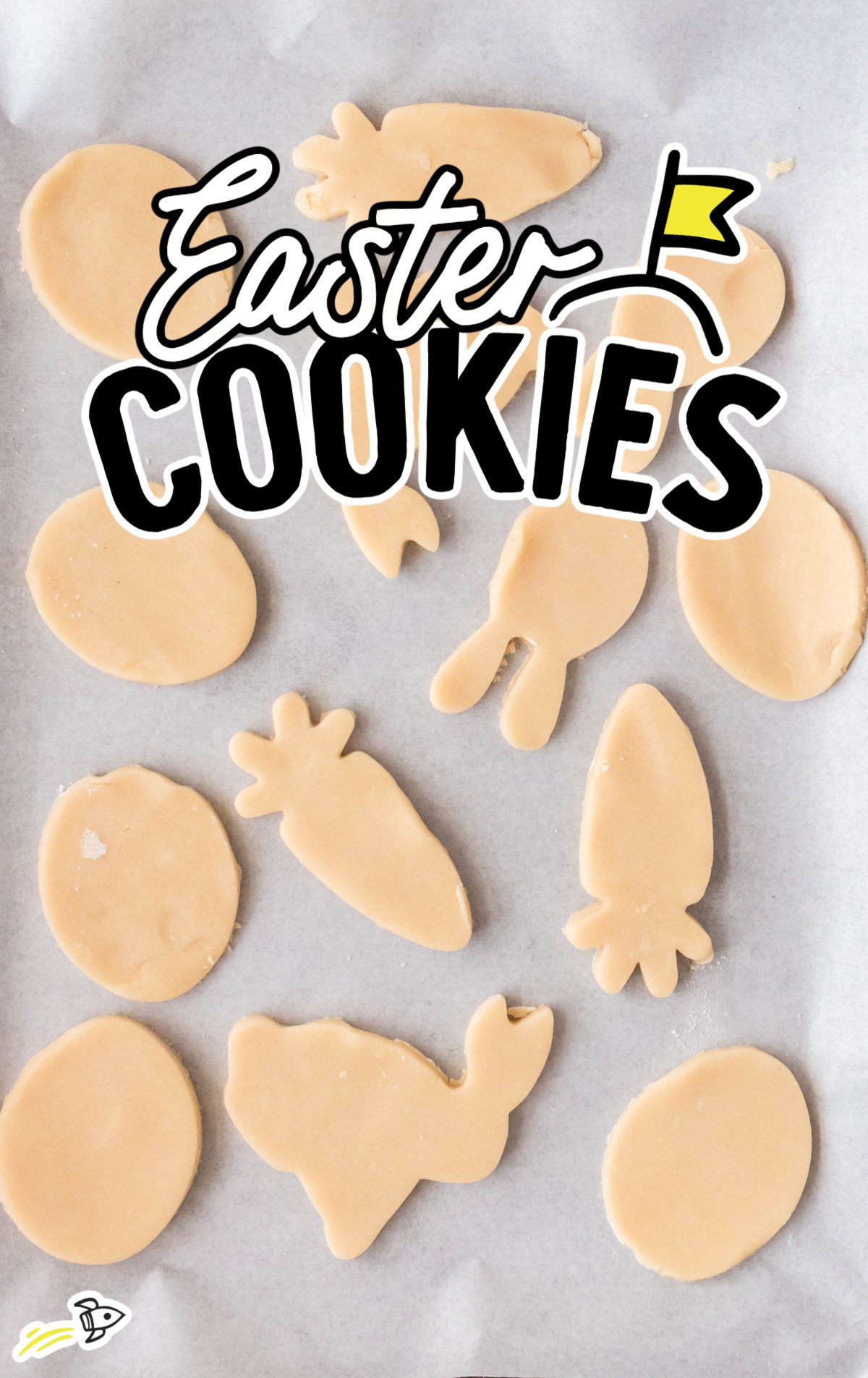
Easter Cookie Ingredients Overview
Quality makes all the difference. ✨ Use fresh baking powder and measure flour by spooning, not scooping, to avoid over-flouring. 🥄
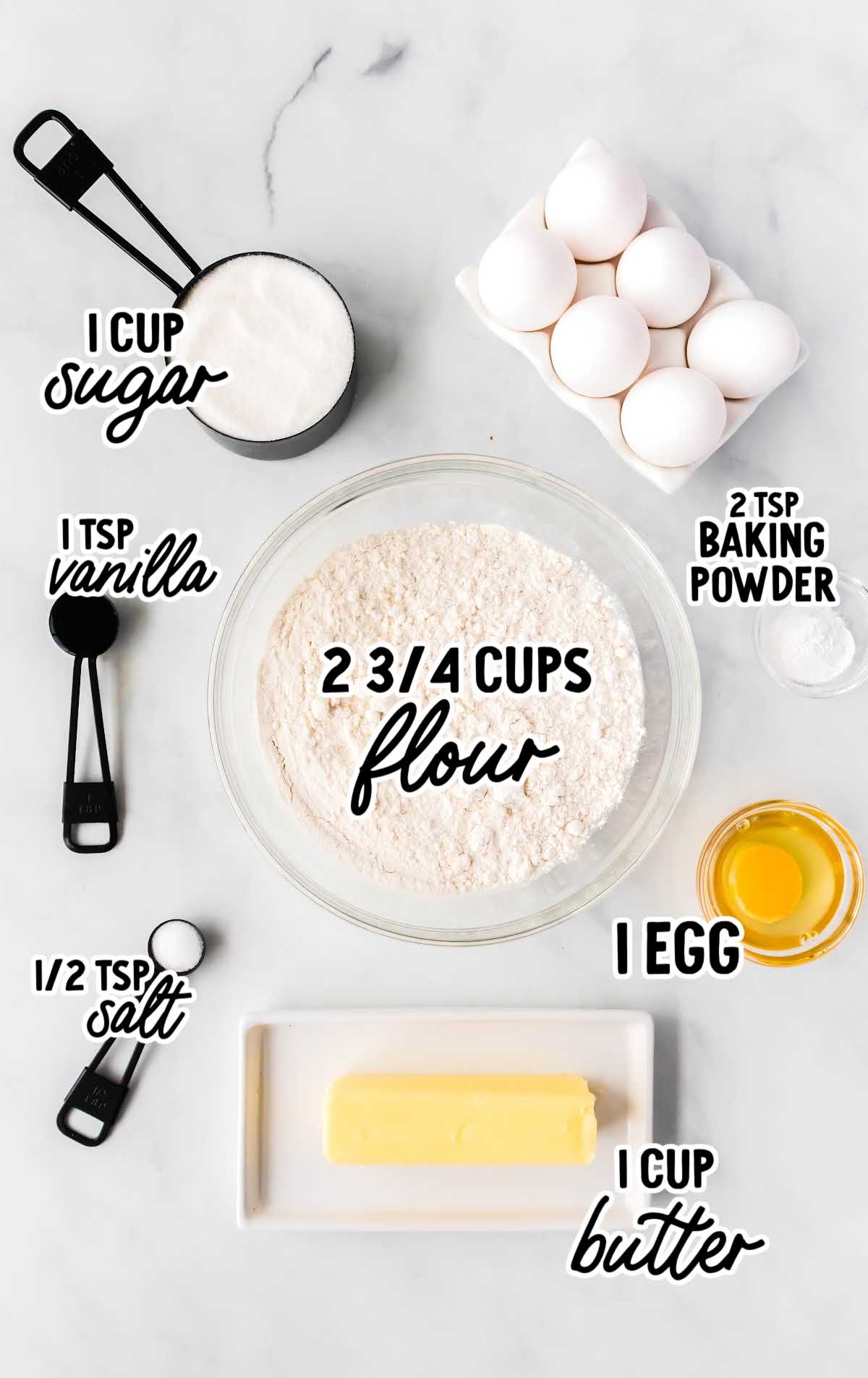
Ingredients You’ll Need:
- Cup unsalted butter
- Cup granulated sugar
- Large egg
- Teaspoon vanilla
- Flour – 2 ¾ cups
- Baking powder – 2 teaspoons
- Salt – ½ teaspoon
Ingredient Substitutions
| Original | Substitute |
|---|---|
| Flour, Baking Powder & Salt | Don’t have exact 1:1 replacements that preserve texture and structure identically, so these are best kept as-is. |
| Vanilla | Use ½ teaspoon of almond extract instead of one teaspoon of vanilla extract. Almond extract has a much stronger flavor, so a little goes a long way. |
Best Frosting for This Easter Cookie Recipe
Any of these frostings complement your Easter cookie recipe beautifully, so pick your favorite style and get decorating!
1. Classic Royal Icing (My Top Pick!)
Smooth finish, dries firm—ideal for detailed decorations. Color with pastel gels for festive Easter shades! Our Recipe: Royal icing
2. Simple Buttercream Frosting
Rich, creamy texture; easy and quick. Spread easily or pipe in fluffy swirls—perfect for decorating with sprinkles. Our Recipe: Buttercream Cookie Frosting
3. Cream Cheese Frosting
Adds a tangy sweetness that’s irresistible with buttery sugar cookies. Spread lightly on cooled cookies and decorate with crushed Easter candies or colorful sugar. Our Recipe: Cream Cheese Frosting
4. Easy Glaze Icing
Simple, glossy finish, dries smooth but stays soft. Dip cookies or drizzle lightly for an elegant, subtle sweetness. Our Recipe: Glaze for Cookies
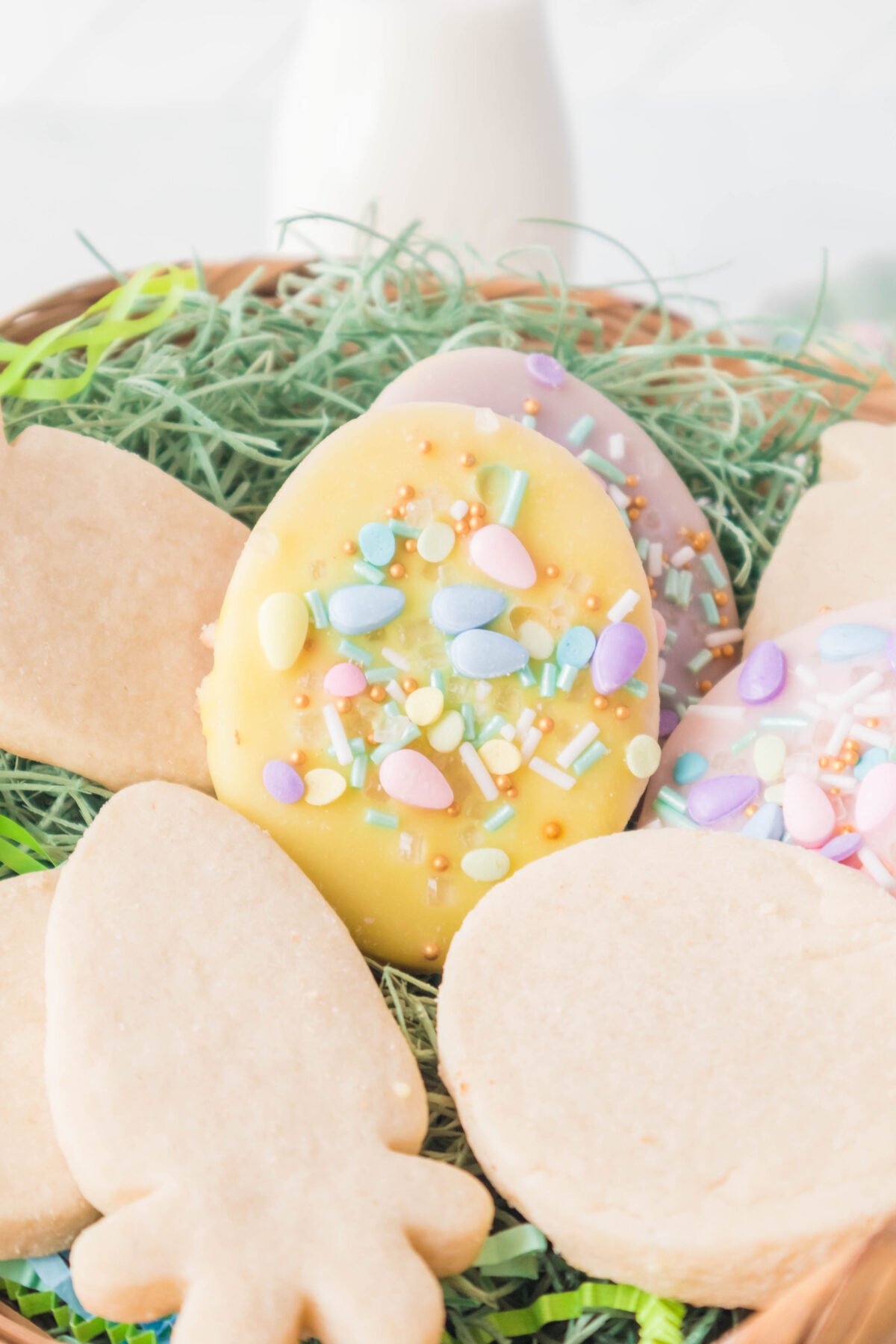
Top Tips
Here’s our shortlist of must-do’s for perfectly soft, buttery, and irresistibly cute Easter cookies every single time:
❄️ Chill the dough! Even 30 minutes in the fridge makes a big difference. Chilled dough rolls out smoothly and ensures those adorable shapes come out crisp and clear, just like you imagined.
🌀Roll evenly. Aim for about ¼ inch thick—perfectly tender, but sturdy enough for decorating.
⏲️Don’t overbake. Pull the cookies from the oven when the edges are just lightly golden. They’ll firm up as they cool, staying soft and buttery.
📜Use parchment paper. Trust me, parchment is your baking BFF. No sticking, no mess, and those cookie bottoms stay perfectly golden.
Making Cookies Weeks Before Easter
These Easter cookies are perfect for preparing ahead of time!
Unbaked Dough
In the Fridge – After preparing your dough, wrap it tightly in plastic wrap and refrigerate for up to three days rolling out and baking. Let the dough sit at room temperature for about 15-20 minutes before rolling to make it easier to handle.
In the Freezer – For even longer storage, freeze unbaked dough tightly wrapped or sealed in freezer bags for up to three months. Thaw in the refrigerator overnight, then allow it to soften slightly (about 20 minutes) at room temperature before rolling and cutting.
Baked Cookies
You can bake the cookies fully, let them cool completely, and store them (undecorated) in airtight containers at room temperature for up to one week.
You can also freeze them in layers separated by parchment paper for up to two months. Thaw cookies at room temperature for a couple of hours before decorating.
Storing Decorated Sugar Cookies
If decorated, let icing dry before stacking with parchment paper between layers. Buttercream-frosted cookies last five days in the fridge or up to two months in the freezer.
✅ If you’re freezing decorated cookies, keep it simple – royal icing works best.
⚠️ Avoid freezing cookies decorated with intricate designs or soft frosting, as these might smudge upon thawing.
Easter Cookies Frequently Asked Questions
Yes, you can use a hand mixer if you don’t have a stand mixer. Just make sure to mix until the butter and sugar are fully creamed and the dough comes together smoothly.
Yes, you can double the recipe, but it’s best to mix the dough in a large bowl to make sure all ingredients are evenly combined. If using a stand mixer, check that it can handle the larger quantity without overflowing. For best results, chill the dough in smaller portions before rolling and baking.
These Easter cookies are easy to make, hold their shape perfectly, and have a melt-in-your-mouth texture that’s great for decorating. Whether you’re baking for a holiday gathering or a fun family activity, this recipe makes a batch of cookies that look and taste just right every time.
More Easter Recipes
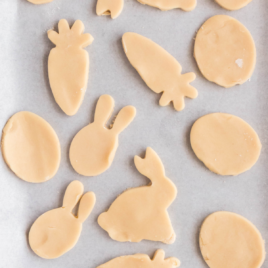
Easter Cookies
Ingredients
- 1 cup unsalted butter, softened
- 1 cup granulated sugar
- 1 large egg
- 1 teaspoon vanilla
- 2 ¾ cups flour, spooned and leveled
- 2 teaspoons baking powder
- ½ teaspoon salt
Instructions
- Preheat the oven to 400°F and line a cookie sheet with parchment paper.
- In a stand mixer or with a hand mixer, cream together the softened butter and sugar until light and fluffy.
- Add the egg and vanilla, mixing until combined. Scrape down the sides of the bowl as needed.
- Gradually add the flour, salt, and baking powder to the wet ingredients, mixing until fully incorporated.
- Transfer the dough to a floured surface, working with half at a time. Roll it out to ¼ to ½ inch thick.
- Lightly flour your cookie cutters, then press them into the dough to create shapes.
- Place the cut-out cookies on the parchment-lined cookie sheet, spacing them about 1 inch apart.
- Bake for 6-8 minutes, or until the edges are lightly browned.
- Let the cookies cool completely before decorating with icing, sprinkles, or other toppings.
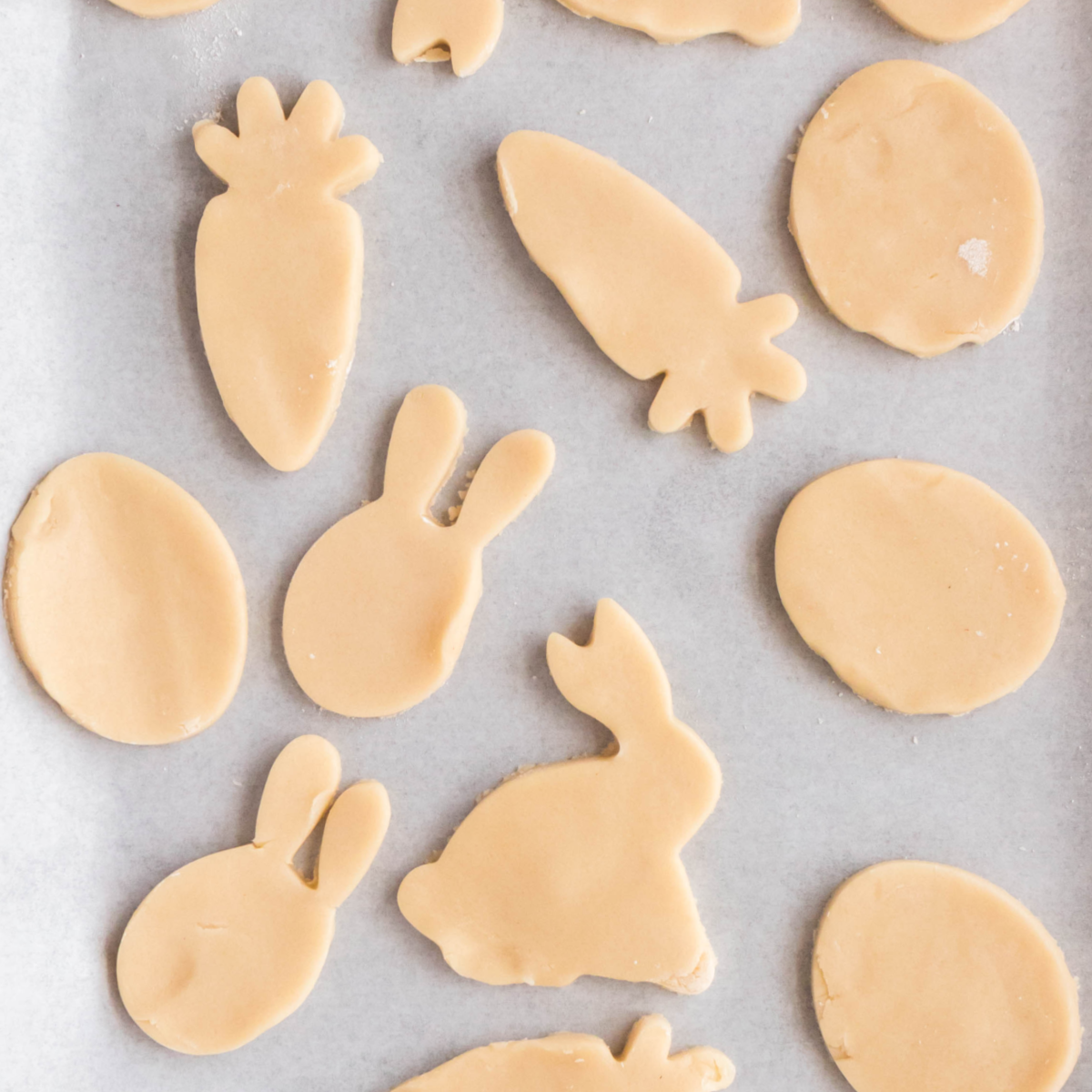









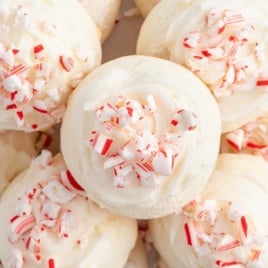
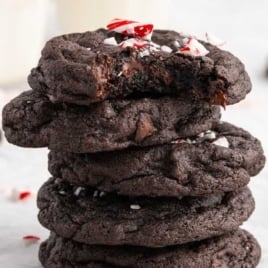
Leave a Comment